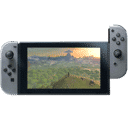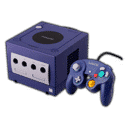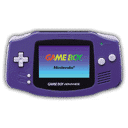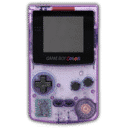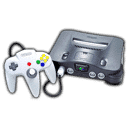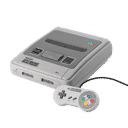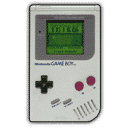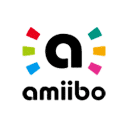
Summary:
The recent Nintendo Switch 2 firmware 21.0.0 has given players quality-of-life improvements, but it also triggered a wave of frustration from people who rely on third party docks. After installing the update, some players discovered that their previously working docks no longer output video to the TV, while charging and USB ports often still behaved normally. Social media quickly filled with accusations that Nintendo was deliberately “bricking” non-official hardware, especially because the Switch 2 already uses a stricter USB-C docking setup than many other devices. Nintendo has now responded and insists it does not have any intention to hinder or invalidate legal third party dock compatibility, pointing instead to accessory makers to restore support through dock firmware updates. We walk through what actually happened, what Nintendo’s wording implies, why some docks still work, and what you can realistically do if your own dock suddenly went dark. By the end, you will have a clear picture of the risks, the options, and the smartest way to plan your next dock purchase or upgrade.
Nintendo Switch 2 third party docks issues after the 21.0.0 update
When firmware 21.0.0 landed on Nintendo Switch 2, most of the attention at first went to small but welcome tweaks such as better eShop behavior and smoother system features. Then the real shock arrived for a specific group of players: people who had built their setup around third party docks. Almost overnight, reports appeared from owners who updated, dropped the console into a familiar dock, and were greeted by a black screen where their game room used to be. In many cases the console still charged, and the dock still behaved as a USB hub, yet the crucial video signal to the TV had vanished. That strange mix – working power, dead picture – naturally made people suspicious. Was this just a glitch, or the result of Nintendo tightening control over a hardware ecosystem that already feels more locked down than the original Switch generation.
How the latest Switch 2 firmware changed dock behavior
To understand why this update shook so many setups, it helps to look at how the Switch 2 dock behaves behind the scenes. The system does not simply treat the dock as a generic USB-C adapter. Instead, it relies on a proprietary handshake that decides when the console should ramp up power draw, enter TV mode, and start sending a proper audiovisual signal out to the screen. Accessory makers spent months reverse engineering that behavior so they could offer travel friendly bricks and cheaper living room docks. With 21.0.0, Nintendo appears to have altered part of that handshake, particularly around how the console negotiates audio and video output. As a result, many existing docks still supply power but can no longer complete the conversation that tells the Switch 2 to shift into full docked output. From the outside it feels like the dock “died,” even though it is really the link between dock and console that changed.
Nintendo’s official statement on legal third party dock compatibility
Once the backlash gained momentum, Nintendo responded to multiple outlets with a carefully worded statement. The company reiterated that Nintendo Switch 2 outputs audiovisuals once it detects that it is docked into a Nintendo Switch 2 Dock, and that the original Switch behaves in a similar way with its own dock. Crucially, Nintendo added that it does not have any intention to hinder or invalidate legal third party dock compatibility. That choice of words does a few things at once. First, it directly pushes back on the idea that this update was meant as a stealth attack on every non official dock in the wild. Second, it quietly draws a line between accessories that Nintendo considers legal and everything else, without spelling out where that line sits. Finally, it hints that Nintendo expects third party vendors to do their homework and adjust firmware when the console’s own software evolves.
What “legal” third party docks actually mean for everyday players
For regular players, the word “legal” in Nintendo’s statement feels a bit loaded. After all, you are not exactly smuggling contraband when you buy a small USB-C dock from a reputable electronics brand. In practice, Nintendo is pointing toward docks that either carry official licensing or at least comply with rules the company believes protect safety, security, and device integrity. That might include respecting power delivery limits, following video output expectations, and not trying to inject any sort of unauthorized functionality into the link between console and TV. The trouble is that shoppers rarely see this nuance clearly on a product page. Many docks are rebranded, resold, and shipped under different names, which makes it hard to know whether the manufacturer is prepared to ship quick firmware updates when an issue appears. For players, “legal” often ends up meaning “made by a company that is willing to fix problems fast when Nintendo changes something again.”
Why some Switch 2 docks stopped working while others survived
One of the more confusing aspects of this situation is that not every third party dock broke at the same time. Some owners reported complete loss of video output, others said their dock still worked without any change, and a few even saw temporary issues with the official dock that disappeared after a restart. This split is a big clue. It suggests that the firmware change did not flip a simple on or off switch for all non Nintendo hardware, but instead exposed subtle differences in how each dock speaks to the console. Certain brands seem to have implemented the handshake more accurately or more flexibly, so they continue to satisfy the Switch 2’s new expectations. Others took shortcuts or targeted older behavior that no longer matches the updated system. That is why you might see one compact travel dock from a well known brand continue to function perfectly while a cheaper clone suddenly acts like a basic charger and nothing more.
How to tell if your Switch 2 dock has been affected by the update
If you are trying to work out whether your own dock was caught in this mess, a few simple checks go a long way. Start by confirming that your Switch 2 itself still works normally in handheld mode and inside the official dock if you have one. That helps separate dock issues from broader console problems. Next, test your third party dock step by step. Does the console charge when connected through the dock. Do the USB ports recognize controllers, Ethernet adapters, or storage devices. The big question is whether the TV shows a signal once the console is seated. If power and USB look fine but the screen stays black or shows “no signal,” your dock is most likely tripping over the new handshake behavior. In that case, swapping cables and HDMI ports is worth a quick try, but if nothing changes you are probably facing a compatibility issue that only a dock firmware update can truly fix.
Practical steps you can take while waiting for a dock firmware fix
Once you confirm that your dock is affected, the situation can feel a bit helpless, especially if that little plastic brick was the heart of a travel setup or a second TV station. The most productive move is to track down the actual manufacturer rather than just the reseller name printed on the casing. Many players have discovered that their dock brand on the label is different from the company hosting the real firmware tools. Check the manual, any included QR codes, or the packaging for a support website, then search that brand together with “Switch 2 dock firmware.” If your model is popular, there is a decent chance the maker has already posted a fix or at least an announcement that one is on the way. While you wait, it is wise to fall back to handheld mode or an official dock where possible, and avoid buying a random replacement out of frustration, since it might suffer from the same problem out of the box.
Choosing between the official Switch 2 dock and third party alternatives
This whole situation naturally reignites a classic question: should you stick with the official dock or keep betting on cheaper, smaller third party options. The official dock costs more, but it is designed around the latest firmware, benefits from Nintendo’s own testing, and is far less likely to be surprised by internal protocol changes. For a primary setup in the living room, that peace of mind carries real weight, especially when you think about the price of the console and your game library. Third party docks still have a place, though. Many players love having a tiny travel dock that slips into a case, or a second dock permanently connected to a bedroom TV. For these use cases, a reputable third party brand that responds quickly with firmware updates can strike a good balance between convenience and cost. The key is treating them as complements to the official dock rather than one to one replacements.
What this situation tells us about Nintendo’s hardware ecosystem
Stepping back, the dock controversy offers a window into how tightly Nintendo wants to manage the Switch 2 ecosystem. The console’s more restrictive USB-C behavior, combined with a proprietary handshake for audiovisual output, shows a clear preference for controlled, predictable hardware interactions over open, plug and play flexibility. From Nintendo’s perspective, that approach lowers the risk of poorly built accessories causing damage, instability, or a flood of support requests. From the player’s perspective, it can feel like a familiar tug of war between freedom and security, especially when a routine update suddenly turns a perfectly good dock into a lifeless stand. It also raises questions about future updates and accessories, because every new firmware revision becomes a moment of tension for third party makers who need to rush tests, patch their own devices, and reassure customers that they will not be left behind.
Tips to future proof your Switch 2 setup for dock updates
While you cannot control Nintendo’s firmware roadmap, you can make smart choices that reduce headaches the next time a big update drops. First, keep at least one official dock in your orbit if your budget allows, even if you mostly rely on third party docks for travel or secondary rooms. That gives you a fallback option whenever compatibility questions arise. Second, treat a dock purchase the way you would treat a new controller or headset: research the brand, look for clear support pages, and check whether they have already responded quickly to this current issue. A company that ships timely firmware updates now is more likely to protect your investment later. Third, resist the urge to update your console the second a new firmware appears if your entire setup depends on a third party dock. Waiting a short while to see early reports can save you from sudden surprises, and gives accessory makers a chance to test their own hardware against the new build.
Conclusion
The Switch 2 dock situation is a reminder that even a seemingly simple accessory can be caught in the crossfire when console firmware evolves. Update 21.0.0 delivered meaningful improvements, but it also exposed how fragile third party compatibility can be when a system depends on a tightly controlled handshake for audiovisual output. Nintendo insists it has no intention of blocking legal third party docks, yet the practical reality for many owners is that their hardware only works again when the dock maker ships a new firmware of its own. The most balanced path forward is to mix caution with flexibility: lean on at least one official dock, favor third party brands with a proven track record of updates, and give yourself a little breathing room before installing future system patches if your whole setup depends on non official hardware. That way, you can enjoy the benefits of a flexible Switch 2 setup without feeling blindsided every time a new version number appears on the system settings screen.
FAQs
- Did Nintendo intentionally break third party Switch 2 docks with update 21.0.0?
- Nintendo publicly states that it does not have any intention to hinder or invalidate legal third party dock compatibility. That means the company frames the issue as an unintended side effect of deeper changes to how the console communicates with docks. Players and commentators can still debate how avoidable the situation was, but based on Nintendo’s own wording, the goal was not to target every non official dock on purpose.
- Is my Switch 2 at risk of permanent damage if a third party dock stopped working?
- In the current situation, the most common symptom is loss of video output to the TV while charging still works, which points to a compatibility problem rather than permanent hardware damage. That said, using poorly designed power accessories has always carried some level of risk, so it remains wise to avoid extremely cheap, no name docks that do not clearly state their power limits or safety certifications.
- How can I fix a third party Switch 2 dock that lost video output after the update?
- The only reliable fix so far is a firmware update from the dock manufacturer. Check the brand’s support page, look for a tool or installer dedicated to your specific dock model, and follow the instructions provided there. Simple tricks such as swapping HDMI cables or power cycling the console are worth a quick attempt, but if those do not help, only the dock vendor can truly restore compatibility.
- Should I avoid all third party docks for my Switch 2 from now on?
- You do not have to avoid every third party dock, but it is smart to be more selective. Prioritize brands that clearly acknowledge the current issue, publish firmware updates, and maintain active support channels. For your main everyday setup, an official dock offers the lowest risk. Third party docks work best as travel companions or secondary stations where a temporary outage would be annoying but not disastrous.
- What can I do before future Switch 2 updates to protect my dock setup?
- If your gaming routine depends heavily on a third party dock, consider waiting a little before installing new firmware, and watch early reports from other players and from your dock’s manufacturer. Keeping one official dock available, registering your dock on the maker’s site where possible, and bookmarking their support page all make it easier to react quickly if a future update introduces new compatibility surprises.
Sources
- Nintendo Comments On Latest Switch 2 Update Disabling Third-Party Docks, NintendoSoup, November 15, 2025
- Nintendo Had No “Intention To Hinder Or Invalidate” Third-Party Docks For Switch 2, Nintendo Life, November 14, 2025
- Nintendo Says It’s Not Prohibiting Third-Party Switch 2 Docks After Players Report Bricking Issues, GameSpot, November 14, 2025
- The latest Nintendo Switch 2 update is good for eShop browsers, potentially horrible for third-party dock owners, TechRadar, November 14, 2025
- Nintendo says it has ‘no intention’ of blocking third-party Switch 2 docks following firmware update that stopped them from working, Tom’s Hardware, November 14, 2025
- Gebruikers van Switch 2 klagen dat thirdpartydocks niet meer werken na update, Tweakers, November 16, 2025


